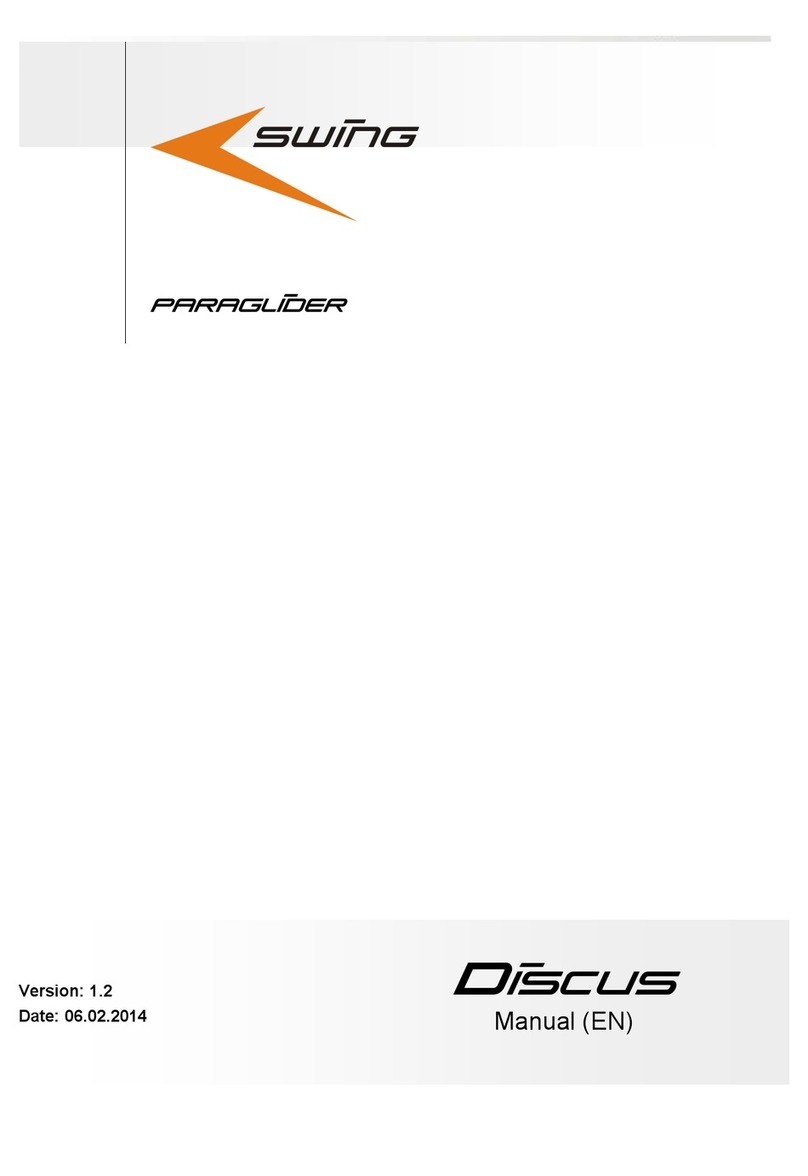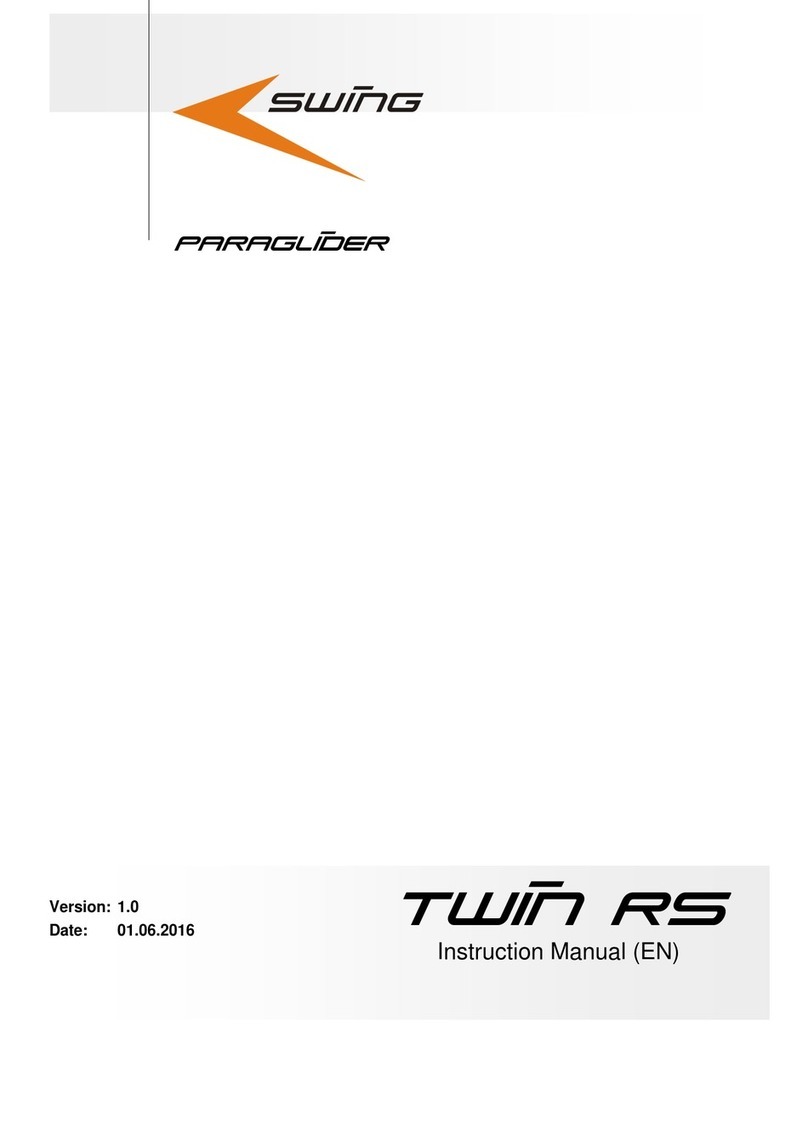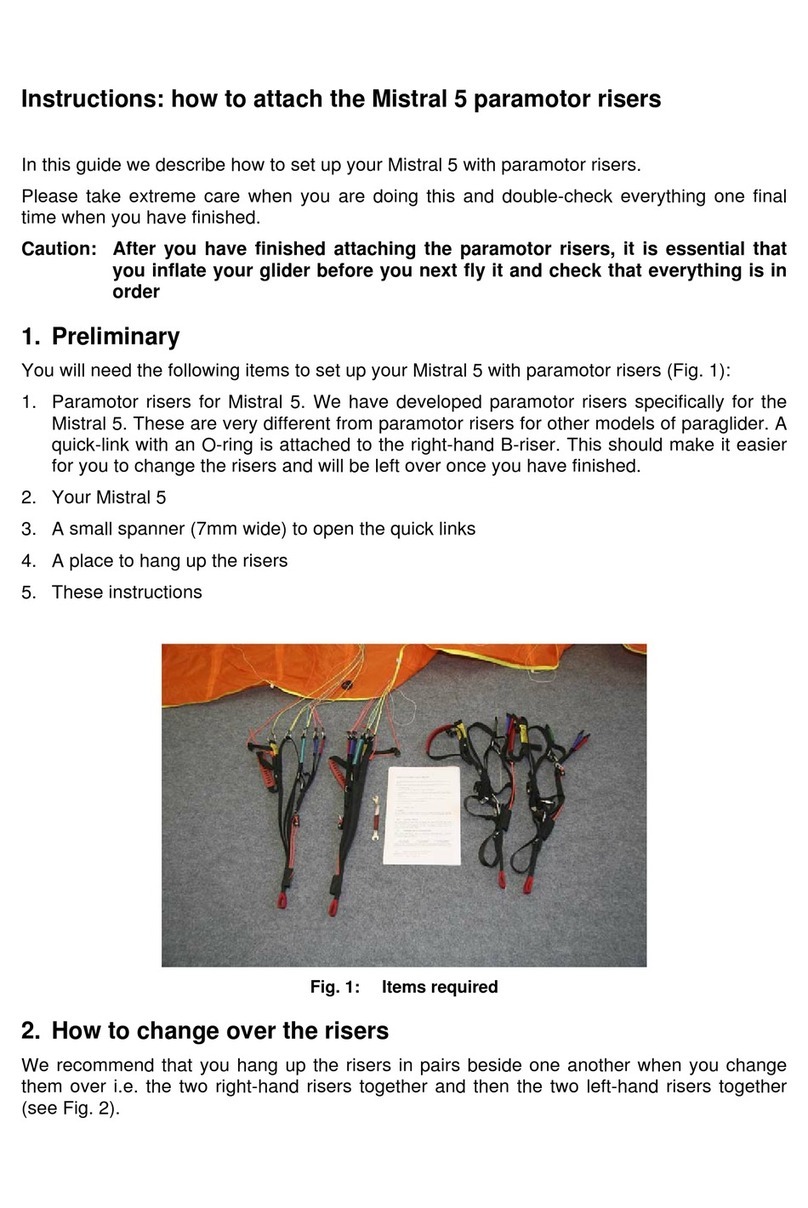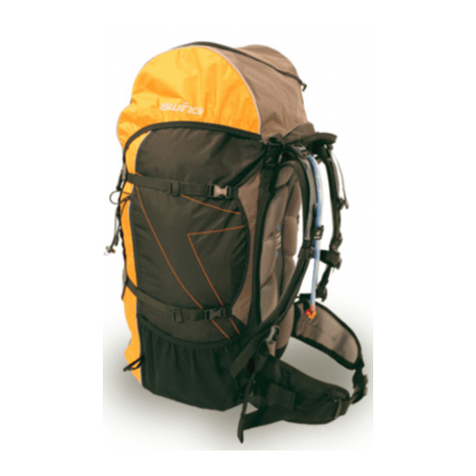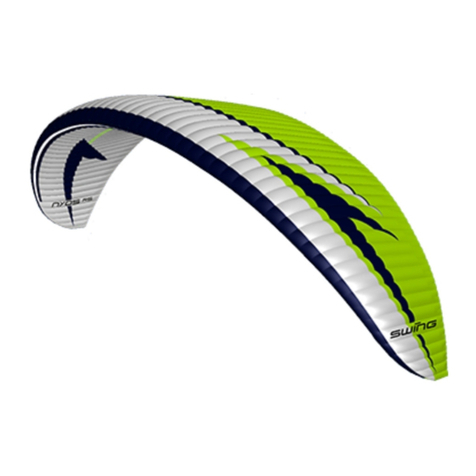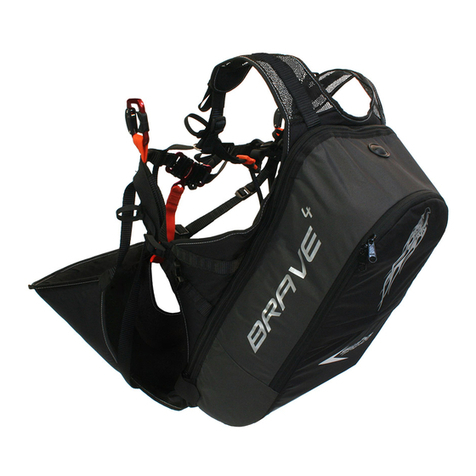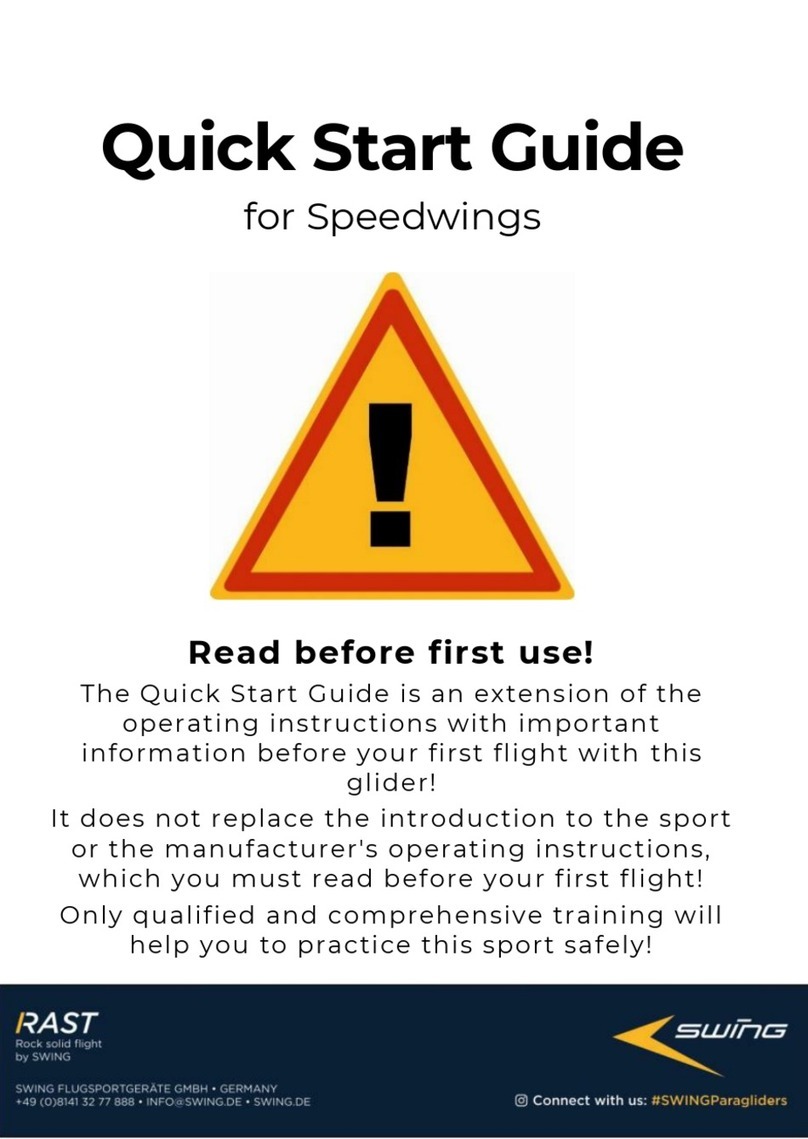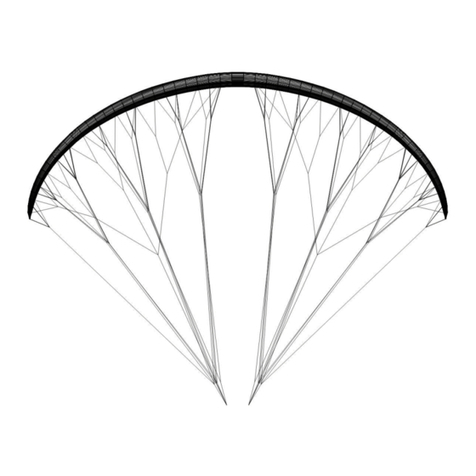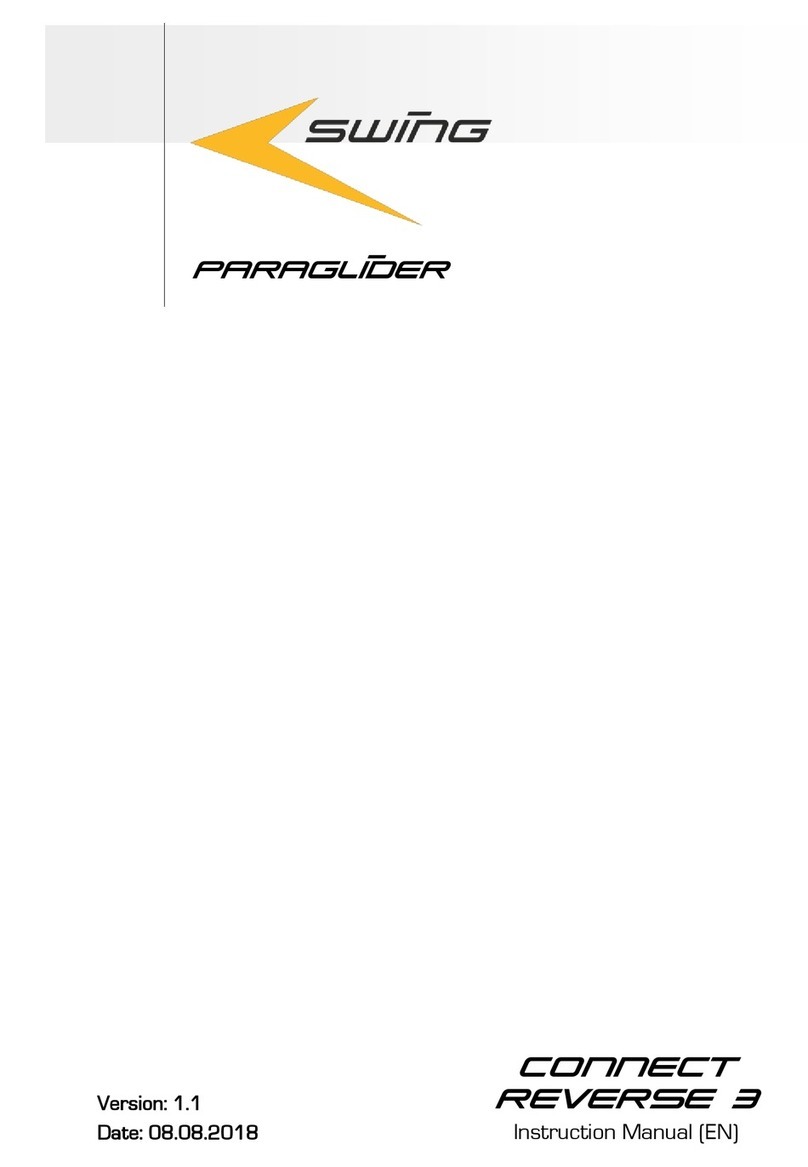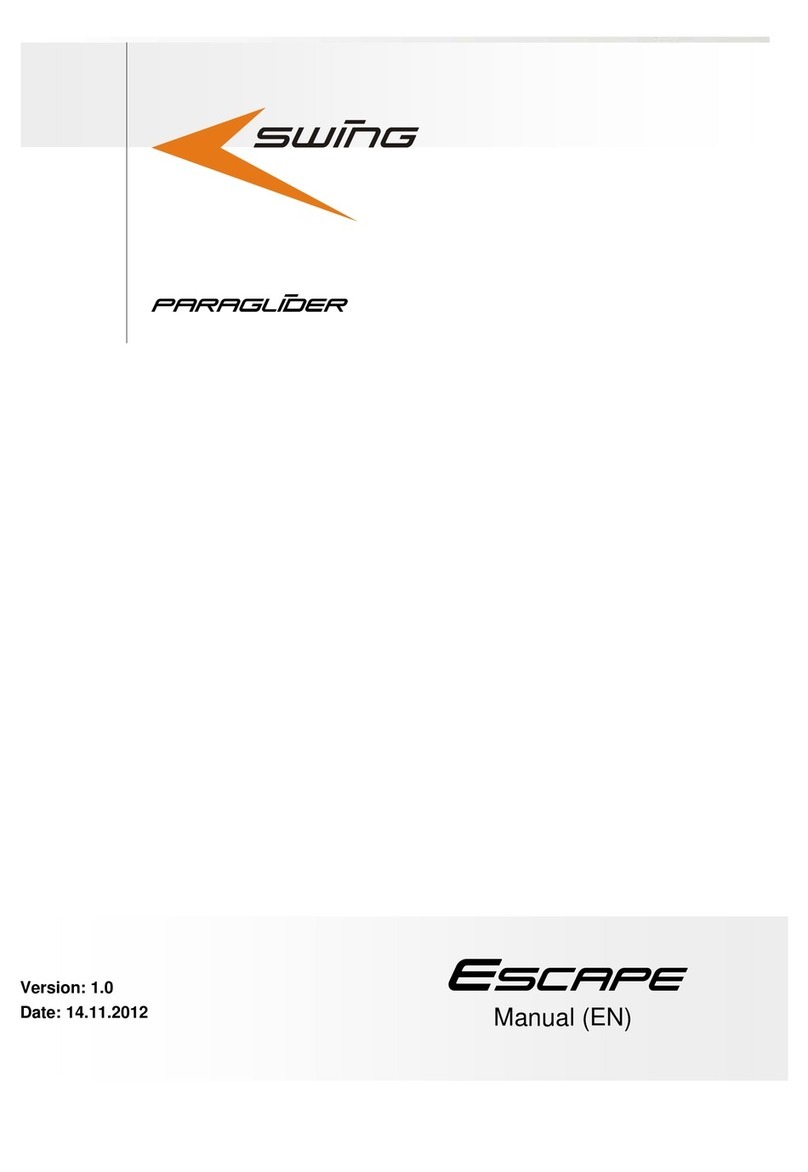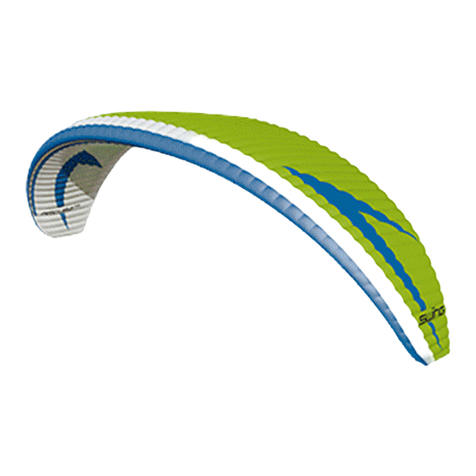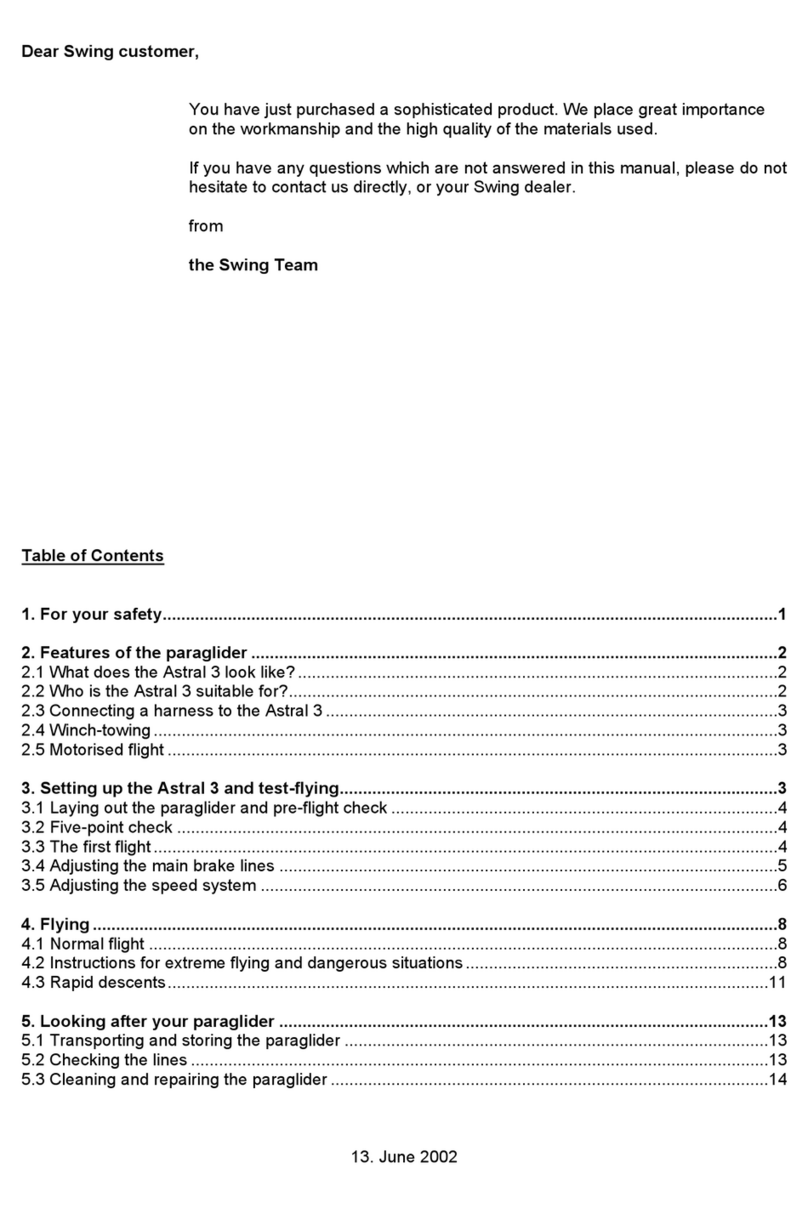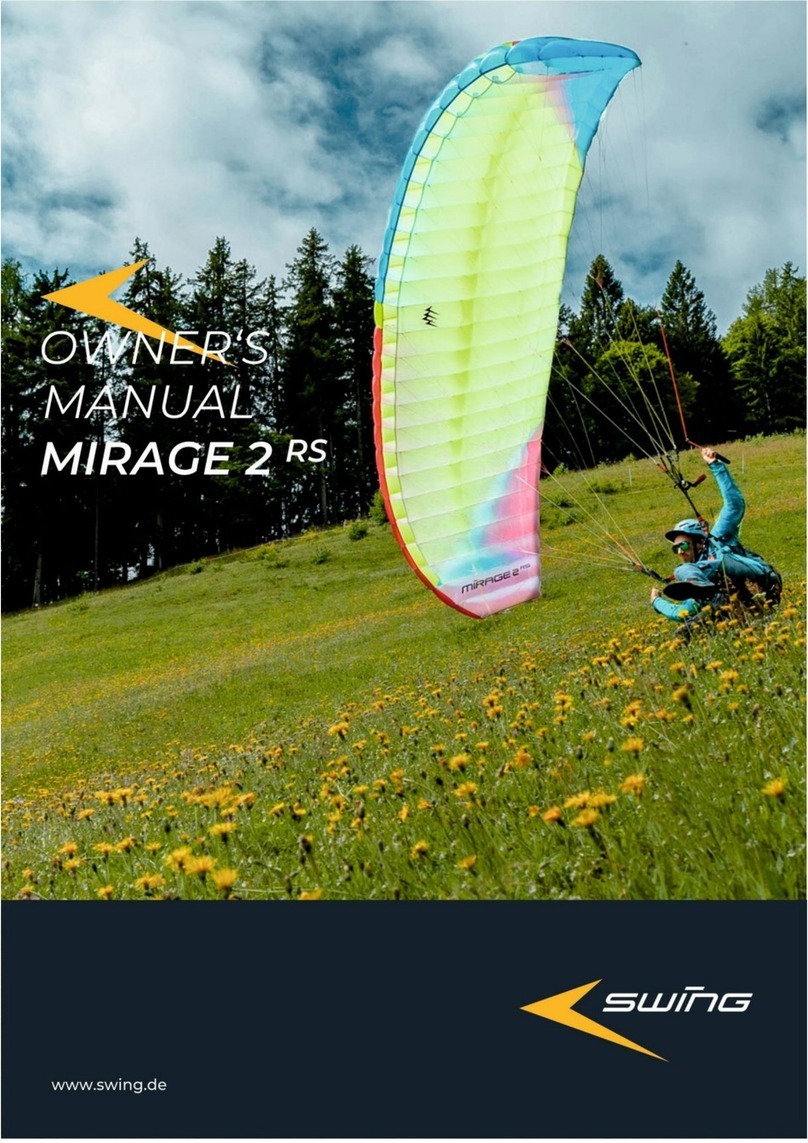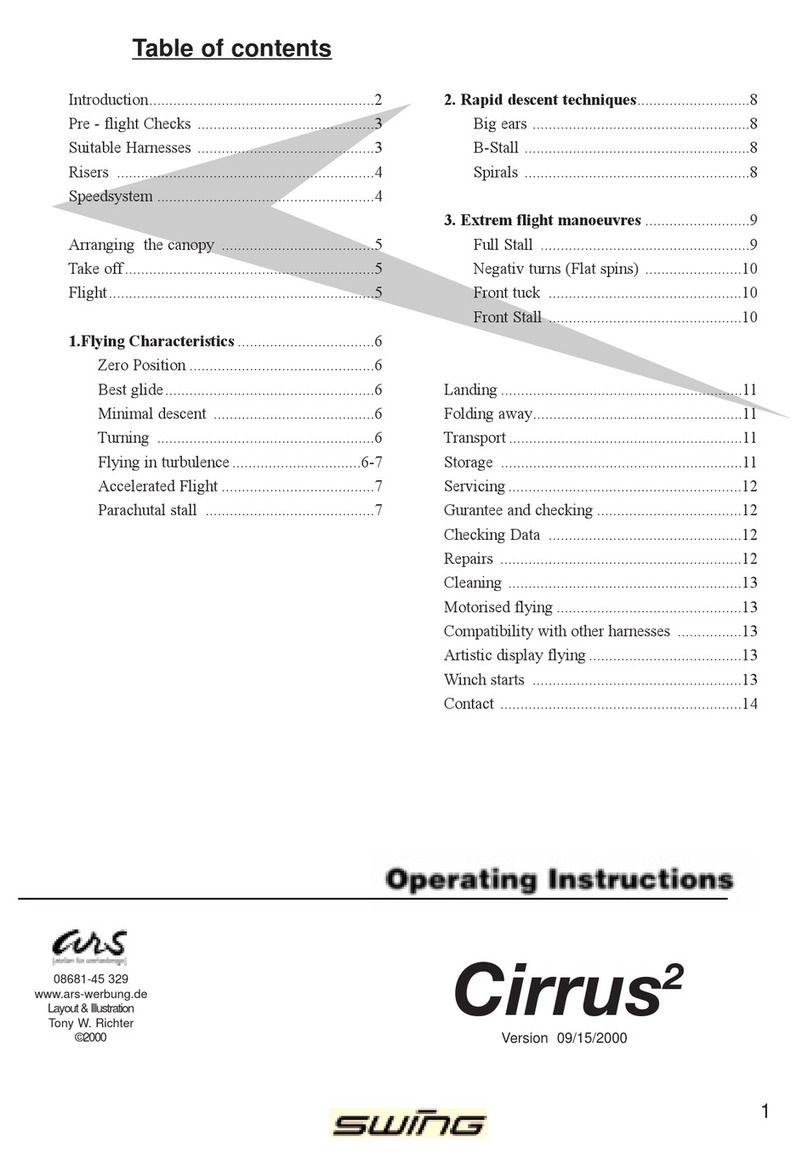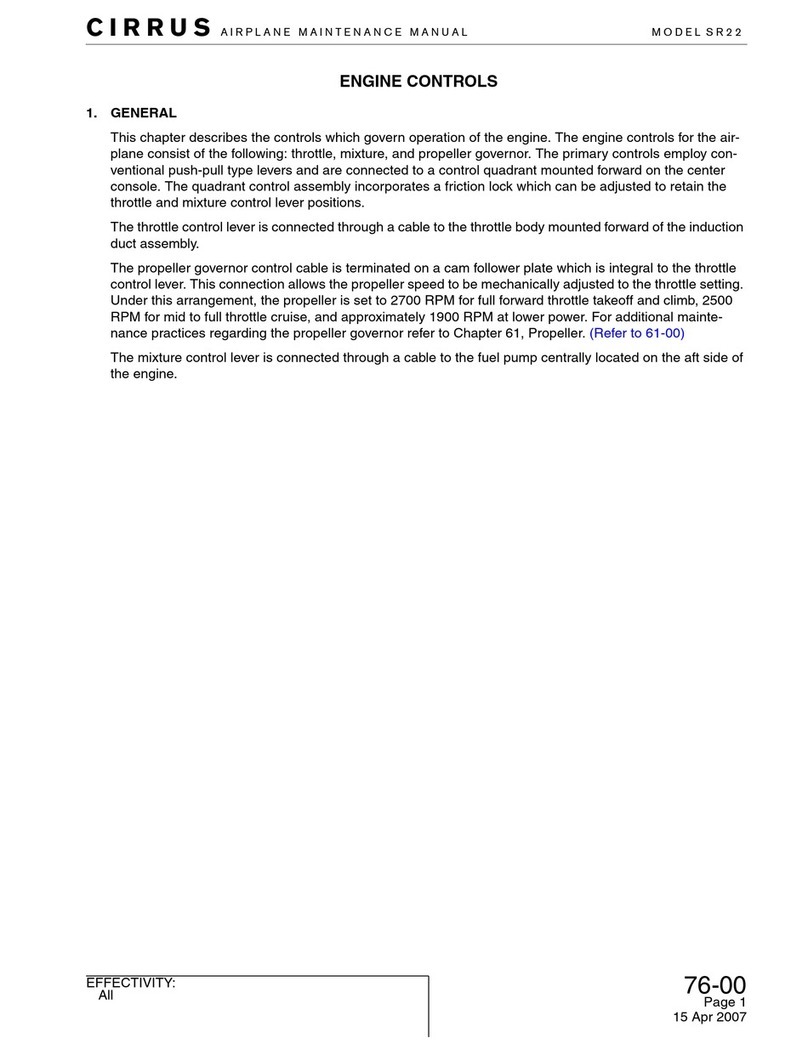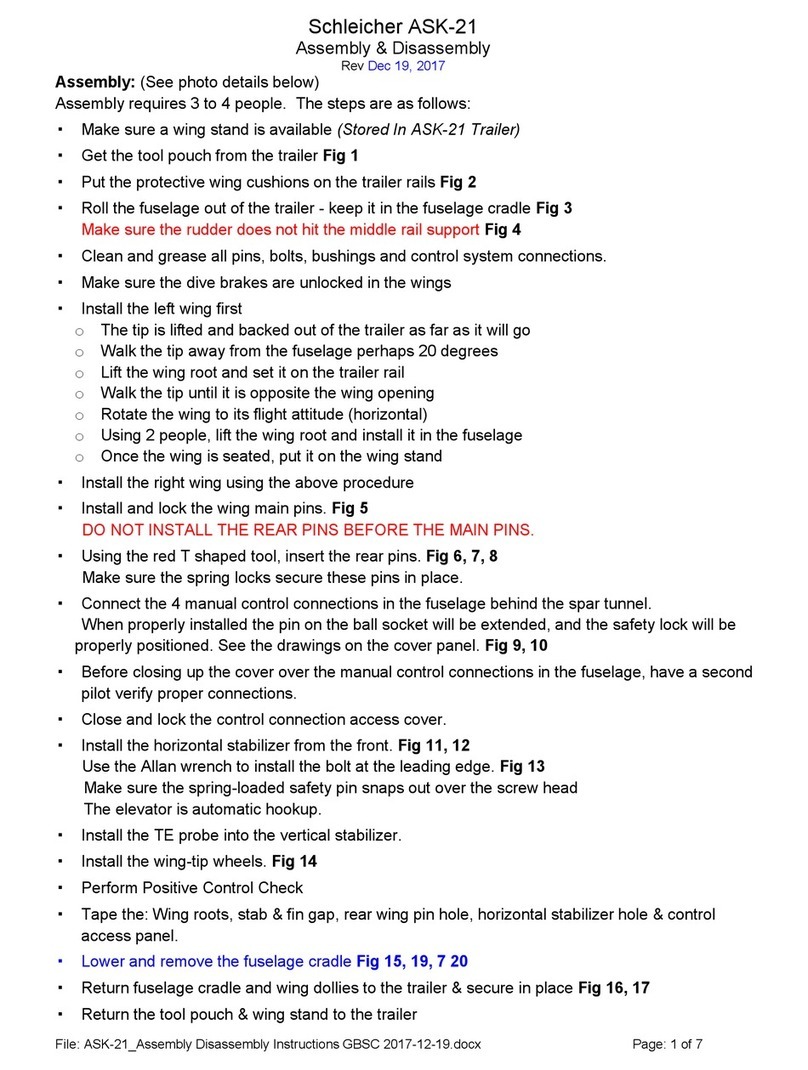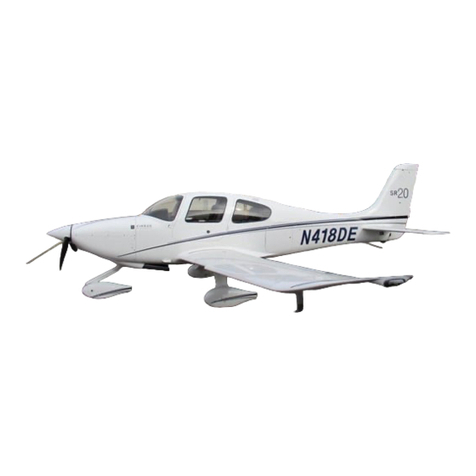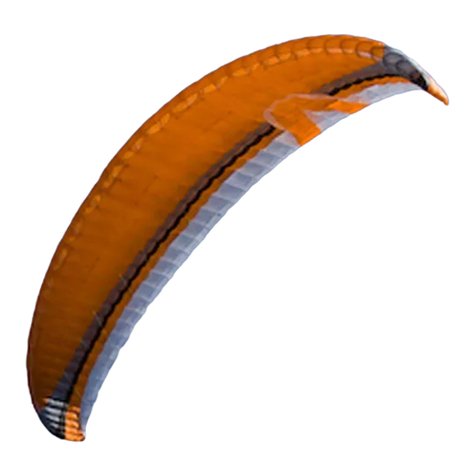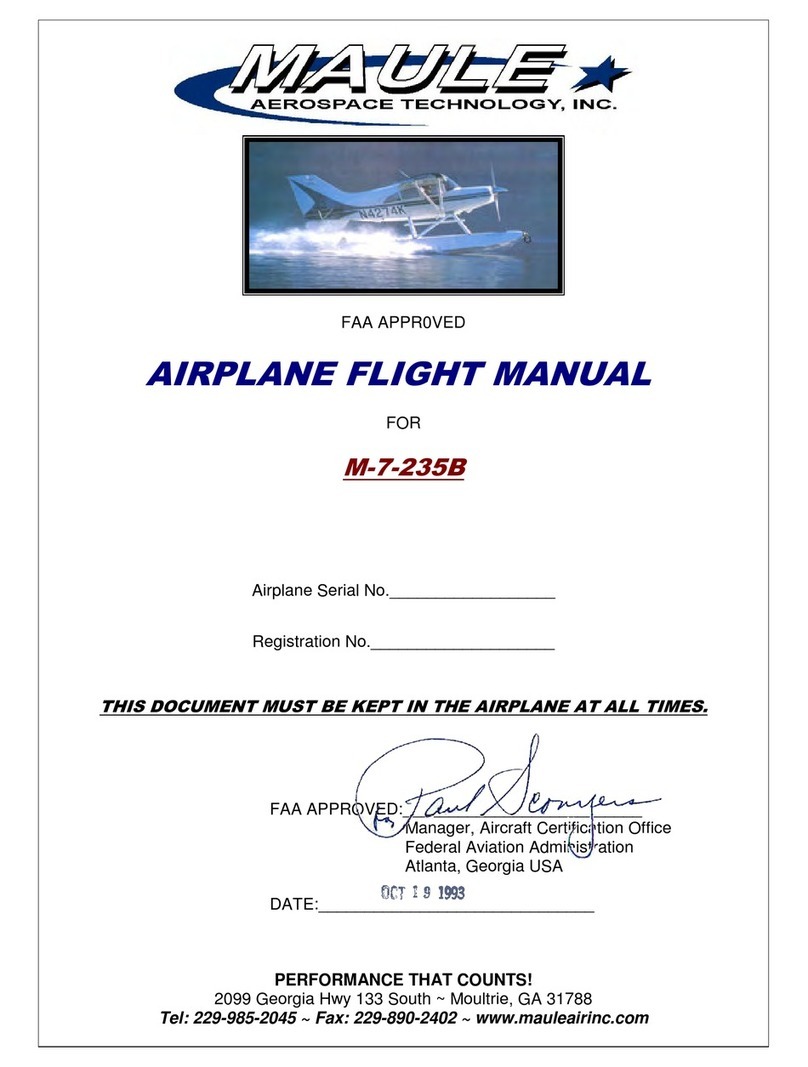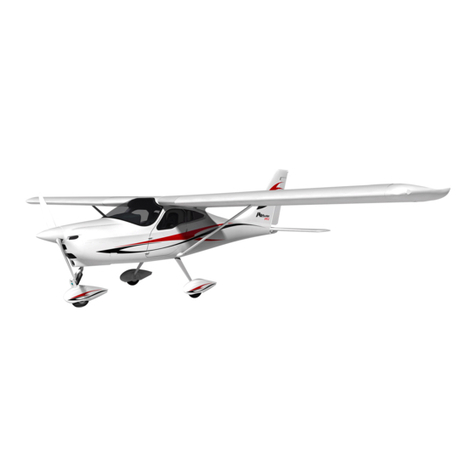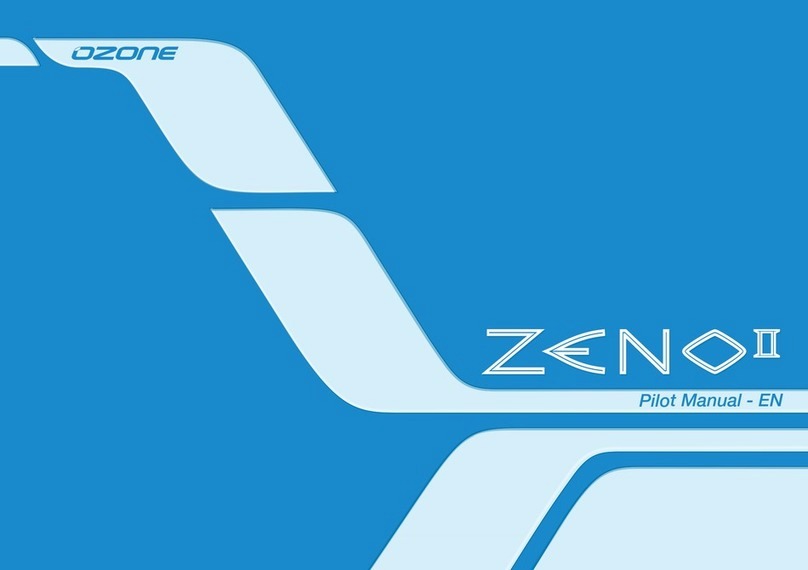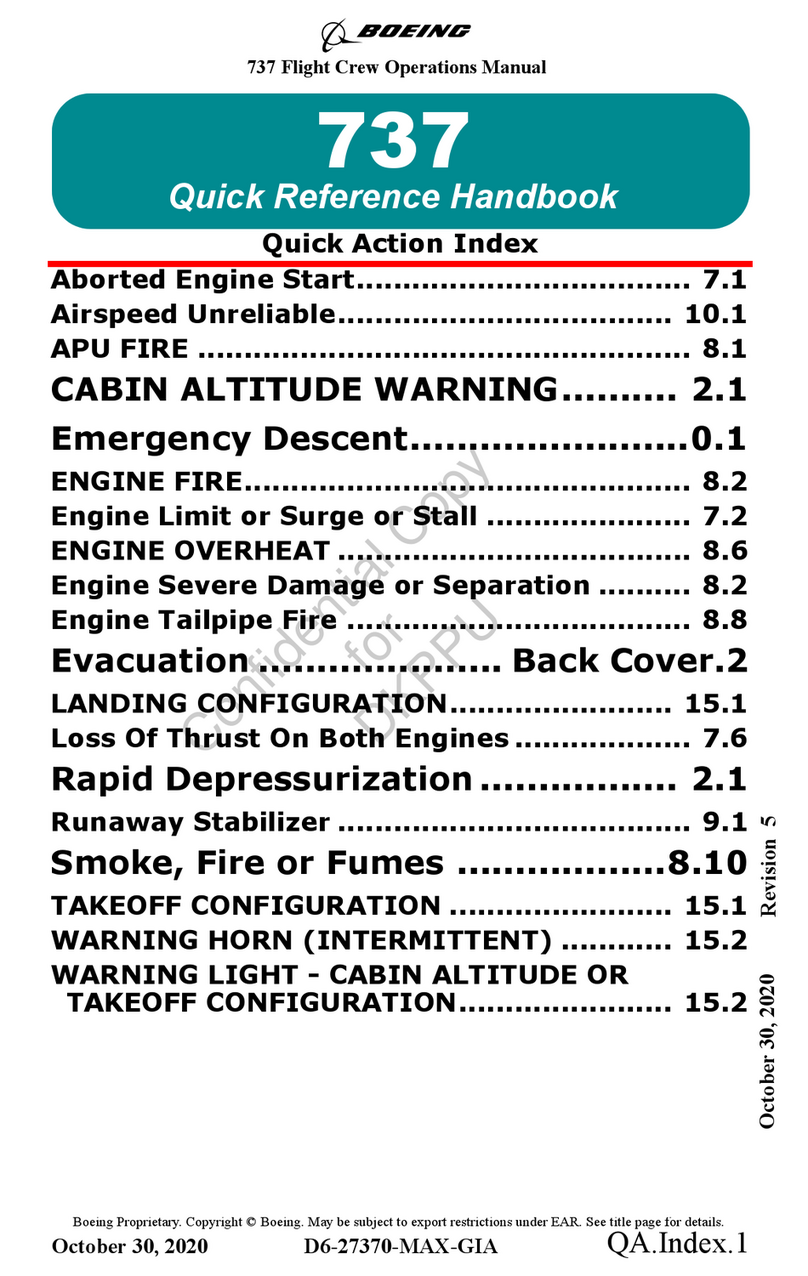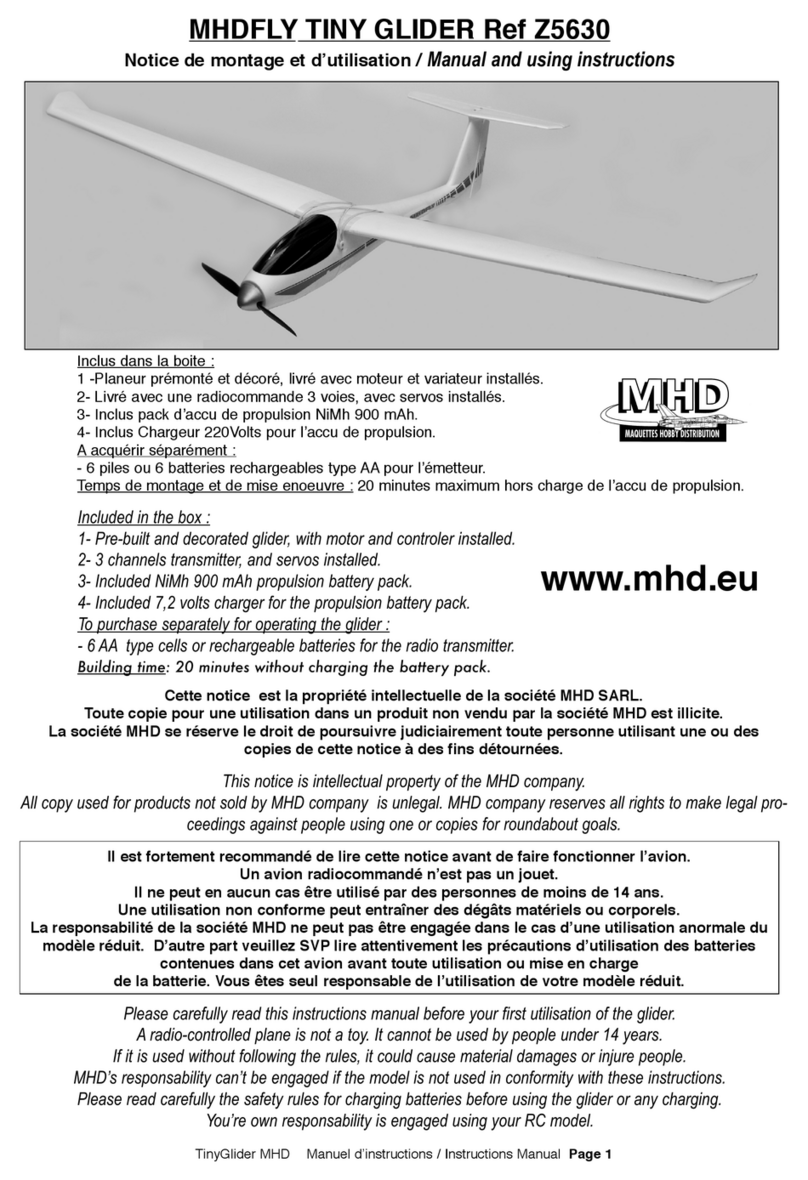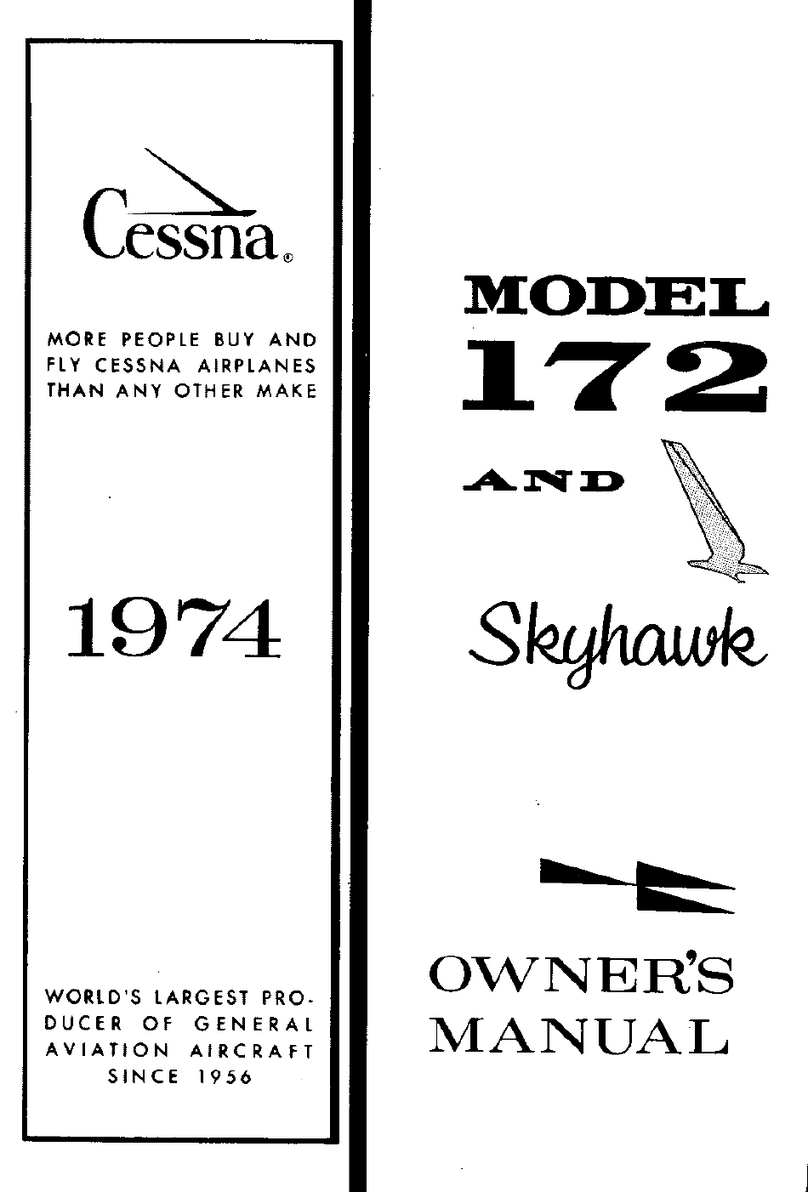
Disclaimer and Exclusion of Liability
Use of this harness is in all cases solely at the USER'S OWN RISK. THE CERTIFICATION
AND THE WARRANTY SHALL BE RENDERED INVALID if any technical modification or
improper repairs are made to it.
Pilots are responsible for their own safety. Before every flight, a pilot must check whether the
harness is airworthy and only launch if it is fit to fly.
The pilot must check the weather forecast and should not fly unless both current and forecasted
conditions guarantee a safe flight.
The harness may only be used if the pilot has a licence which is valid for the area or is under
the supervision of an approved flying instructor. There shall be no liability on the part of third
parties, in particular the manufacturer and distributor.
In terms of the exclusion of liability and warranty conditions, the harness (attached to a
paraglider) may not be used in any of the following situations:
1. the pilot has carried out repairs to the harness, unauthorised repairs have been made to
the harness or repairs have been carried out using parts which are not originals;
2. the take-off weight is not within the permissible take-off weight range;
3. there is rain and/or snow;
4. the pilot is carrying out aerobatics / extreme flying or flight manoeuvres at an angle greater
than 60°;
5. the pilot has insufficient experience with the harness;
6. the pilot has incorrect equipment or inadequate equipment (reserve, helmet, footwear etc);
7. the harness is to be used for winch launching using a winch which has not been inspected
or by non-licensed pilots and/or winch operators;
8. modifications have been made to the harness which have not been approved;
9. the pilot intends to use the harness for a purpose which is not connected with paragliding
e.g. this harness is not a parachute harness and not intended for use as such.
10. the harness is wet or damaged through wear, or there are any sticky substances on it.
